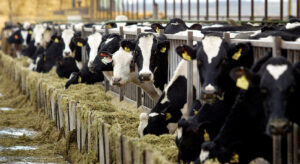PHILIPPINE dairy demand is expected to increase in 2026, while the growth of imports is likely to slow down due to an increase in domestic production, according to the US Department of Agriculture (USDA).
The USDA projects that dairy consumption in the Philippines will increase 1.5% to 3.54 million metric tons (MT) in 2026, driven by a growing population and an expanding middle class.
“Middle-class households spend a higher percentage of their income on dairy products … As incomes grow among the middle class, spending can increase up to nine times for milk and dairy products,” the USDA report said, citing the Philippine Statistics Authority (PSA).
The USDA said rising consumption is also supported by infrastructure investments, particularly in cold chain facilities, supermarkets and display areas.
For liquid or ready-to-drink (RTD) milk, growth will be driven by the expansion of the government’s milk feeding program (MFP) and strong food service growth, especially in the coffee shop industry, takeout and delivery services.
The market for RTD milk is growing as a result of Republic Acts (RA) No. 11037 and RA 11148, requiring investment in the MFP to benefit preschoolers and malnourished school children. According to the USDA, around 60% of domestic fresh milk production goes to the MFP program, and the remainder to local commercial sales or household consumption.
The USDA projected 1.5% growth in dairy imports in 2026, decelerating from 20% growth recorded in 2024.
The Philippines imports 99% of its dairy requirements as domestic production cannot meet demand. “The Philippine dairy market remains competitive, with the US and New Zealand having the largest shares, followed by Indonesia, Australia and Denmark,” the USDA said.
The USDA forecasts domestic dairy production to grow 3% to 37,000 MT in 2026, supported by an increase in the dairy herd and the active implementation of the government’s dairy development projects.
The Philippine National Dairy Authority and the Philippine Carabao Center are rolling out various projects to increase the herd and boost milk production. The program includes the establishment of stock farms and feed centers, community-based farm enterprise development, and various dairy food safety projects.
The Department of Agriculture (DA) earlier said it set a target of 5% of the Philippines’ dairy requirements to be serviced by domestic production within the next two or three years. — Vonn Andrei E. Villamiel

